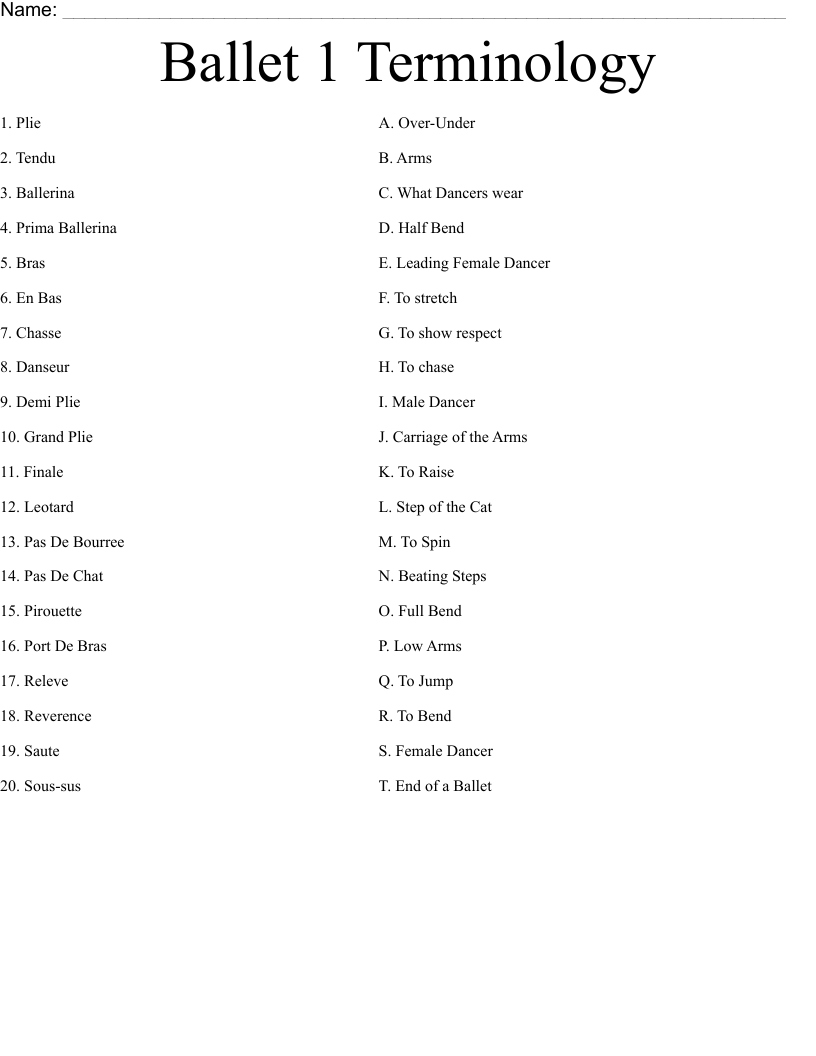Ballet is a beautiful and elegant form of dance that requires precision, strength, and grace. To fully appreciate and understand ballet, it is important to be familiar with the various terms used in this art form. Below is a list of some common ballet terms along with pictures to help you visualize and understand each term better.
1. Plie

A plie is a bending of the knees while keeping the back straight. It is an essential movement in ballet and helps to strengthen the legs and improve flexibility.
2. Arabesque

An arabesque is a position where the dancer stands on one leg with the other leg extended behind the body. It requires balance and control to maintain this graceful pose.
3. Pirouette

A pirouette is a turning movement performed on one leg. Dancers spin on the supporting leg while keeping the other leg in a position such as passé or attitude.
4. Grand Jete

A grand jete is a big leap where the dancer jumps from one foot to the other, while extending both legs in mid-air. It requires strength, flexibility, and proper technique to execute this movement gracefully.
5. Adagio

Adagio is a slow and controlled movement in ballet that focuses on fluidity and grace. Dancers perform adagio sequences to showcase their strength, flexibility, and artistry.
In conclusion, ballet is a beautiful and intricate art form that requires dedication, discipline, and a thorough understanding of its terminology. By familiarizing yourself with these ballet terms and practicing them regularly, you can enhance your skills as a dancer and fully appreciate the beauty of ballet.
